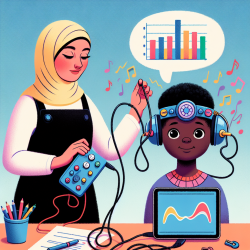Unlocking the Connection Between Theory of Mind and Personality Disorders
As practitioners in the field of speech-language pathology, understanding the intricate relationship between Theory of Mind (ToM) and personality disorders is crucial for improving therapeutic outcomes. A recent study titled "Profiles of Theory of Mind Impairments and Personality in Clinical and Community Samples: Integrating the Alternative DSM-5 Model for Personality Disorders" offers valuable insights into this relationship.
The Study's Core Findings
The study explores how individuals with varying ToM profiles differ in terms of personality impairment as defined by the DSM-5 Alternative Model for Personality Disorders (AMPD). The research identified five distinct clusters of ToM profiles, with notable differences in intimacy and empathy dysfunctions, as well as antagonistic traits such as deceitfulness, callousness, and hostility.
Implications for Practitioners
Understanding these profiles can help practitioners tailor interventions more precisely. For example, children exhibiting ToM impairments might benefit from targeted interventions that consider both their ToM abilities and personality functioning. This approach can lead to more effective communication strategies and improved social outcomes.
Encouraging Further Research
While the study provides a solid foundation, it also highlights the need for further research, particularly in how these findings can be applied in real-world settings. Practitioners are encouraged to explore how these insights can be integrated into their practice, potentially leading to new methodologies that enhance therapy outcomes for children.
Conclusion
The integration of ToM assessments with personality evaluations offers a promising avenue for enhancing therapeutic strategies. By focusing on both constructs, practitioners can develop more comprehensive and individualized treatment plans that address the unique needs of each child.
To read the original research paper, please follow this link: Profiles of theory of mind impairments and personality in clinical and community samples: integrating the alternative DSM-5 model for personality disorders.










